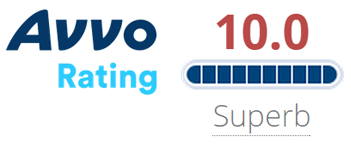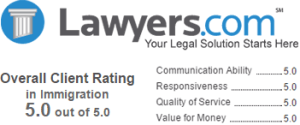Shusterman’s Immigration Update March 2018
Volume Twenty Three, Number Three
SHUSTERMAN’S  IMMIGRATION UPDATE is the Web’s most popular e-mail newsletter regarding US immigration laws and procedures with over 60,000 subscribers located in more than 150 countries. It is written by a former INS Trial Attorney (1976-82) and his team of immigration attorneys and paralegals.
IMMIGRATION UPDATE is the Web’s most popular e-mail newsletter regarding US immigration laws and procedures with over 60,000 subscribers located in more than 150 countries. It is written by a former INS Trial Attorney (1976-82) and his team of immigration attorneys and paralegals.
Published by the Law Offices of Carl Shusterman, 600 Wilshire Blvd, Suite 1550, Los Angeles, California, 90017. Phone: (213) 623-4592 x0.
Want to keep up to date with the latest changes in immigration laws, procedures, processing times and forms? Subscribe now to our Immigration Newsletter, join the conversation on our Facebook Page, follow our Blog Posts and subscribe to our “How-To” Immigration Videos.
Client Reviews

Highly Competent Legal Services
“I work with Merritt Hawkins, the largest physician search firm in the United States. For over 20 years, we have partnered with The Law Offices of Carl Shusterman, which assists us in obtaining visas for the many international physicians we recruit. Mr. Shusterman and his staff have been an indispensable resource of expertise, allowing us to recruit international doctors in the most efficient manner possible on behalf of our clients.”
- Phil Miller, Merritt Hawkins, Dallas, Texas
Read More Reviews
Zoom Consultations Available!
Shusterman’s Immigration Update March 2018
TABLE OF CONTENTS
1. DACA Not Dead, But Remains on Life Support
2. State Department Visa Bulletin for March 2018 & Predictions for FY2018
3. Immigration Government Processing Times
4. Asylum: USCIS Implements New Scheduling System
5. Success Story: Saving a Client’s Long-Pending Adjustment of Status Application
6. Immigration Trivia Quiz: Dancing Without Borders
7. Ask Mr. Shusterman: New CSPA Decision Could Help Keep Families Together
8. Shusterman’s Upcoming Immigration Seminars
9. Jobs & Green Cards for RNs & MedTechs: Free Legal Help!
10. Winner for Our February 2018 Immigration Trivia Quiz
NEWS FLASHES
- AILA Publishes Practice Advisory on EOIR-Issued Removal Orders – On February 7, the American Immigration Council published a practice advisory on motions to reopen removal orders with the EOIR. The advisory also provides information on how to seek a stay of removal in conjunction with the filing of a motion to reopen.
- Detained Immigrants Who Are Not Entitled to Bond Hearings – On February 26, the Supreme Court ruled that certain immigrants who are detained for having committed deportable crimes are not entitled under the immigration law to bond hearings by Immigration Judges. The Court remanded the case to the US Court of Appeals for the 9th Circuit to determine whether there is a right to a bond hearing under the US Constitution.
- DHS Will Not Publish H-4 EAD Rule Until June 2018 – A rule ending EAD work permits for H-4 spouses will not be published by the Department of Homeland Security (DHS) until June 2018. Even then, it will be a proposed rule requesting comments from the public. .
- Economists Predict Economic Growth to Slow Under Trump Plan – On February 2, a report by the Cato Institute found that Trump’s Immigration Plan would lower GDP by 15.5% by the year 2060.
- H-1B Memo Targets Outsourcing Firms – On February 22, the USCIS issued a memo which requires outsourcing firms to list specific work assignments, including dates and locations, and to verify the “employer-employee” relationship on H-1B petitions. This is to insure that the workers will not be underpaid or perform “non-specialty” jobs when they are contracted out to 3rd-party worksites.
- Presidential Memo on the Creation of a National Vetting Center – On February 6, the White House released a memorandum which directs DHS and other agencies to establish a National Vetting Enterprise. The center will be created to streamline vetting, to improve intelligence and to promote homeland security and public safety.
- USCIS Expands Payment Options for Fees – On February 14, USCIS announced credit card payments will be accepted for many of their forms. Applicants will fill out their credit card information and USCIS will enter the data into the Treasury Department’s pay.gov system.
- USCIS Issues Final Policy Memorandum on Power of Attorney Signatures – On February 16, USCIS announced individuals who are seeking immigration benefits must provide a valid signature and other legal entities must provide signatures from an authorized person. The agency will no longer accept power of attorney signatures effective March 18.
1. DACA Not Dead, But Remains on Life Support
 Last September, the Administration announced that the Deferred Action for Childhood Arrivals (DACA) program established by President Obama in 2012 which grants work permits and shields certain young persons from deportation would be ended on March 5, 2018.
Last September, the Administration announced that the Deferred Action for Childhood Arrivals (DACA) program established by President Obama in 2012 which grants work permits and shields certain young persons from deportation would be ended on March 5, 2018.
President Trump said that he was sympathetic to these young people and that 6 months was plenty of time for Congress to enact DACA into law.
Yet, a few weeks before the program was set to expire, the President imposed a number of conditions on Congress to be enacted in exchange for him to support DACA.
These included appropriating $25 billion to build a border wall with Mexico, a dramatic increase in funding for immigration enforcement and cutting family-based immigration to the US by over 50%.
Because it rejected these demands, Congress failed to pass a bill protecting DACA recipients, even though there was wide bipartisan support for doing so.
Fortunately, DACA did not end on March 5.
The Administration attempted to bypass the US Court of the Appeals for the 9th Circuit and have the Supreme Court strike down the injunction.
However, on February 26, the Supreme Court declined to do so.
The 9th Circuit fast-tracked the matter, and a decision is expected possibly by June. From there, the Supreme Court is expected to rule on the matter sometime after the November elections.
Meanwhile, Congress will have another chance to revisit DACA since it must pass a spending bill before March 23.
However, unless the Administration drops its insistence that passage of a DACA bill remain dependent upon the acceptance of its other demands, there is little hope that DACA will be enacted into law.
2. State Department’s Visa Bulletin for March 2018 Predictions for FY2018
EMPLOYMENT CATEGORIES
In the March 2018 Visa Bulletin, the worldwide EB categories all remain current.
China EB-2 and EB-3 for professionals move ahead by 9 and 4 weeks, respectively. China EB-5 remains frozen at July 22, 2014.
India EB-2 advances 1 week while India EB-3 moves ahead by 4 weeks.
Philippines EB-3 advances by 8 weeks.
Below are the State Department’s Charlie Oppenheim’s most recent predictions for the movement of employment-based priority dates for the rest of the fiscal year:
EB-1 China and EB-1 India. These categories will remain current for the coming months, but the imposition of a final action date in the summer remains possible.
EB-2 Worldwide. The final action dates for this category will remain current for the foreseeable future. Charlie notes a decrease in EB-2 Worldwide demand, which could be exacerbated by the transition of employment-based I-485 processing to the local USCIS field offices.
EB-2 China and EB-3 China. In January, EB-2 China and EB-3 China advance by more than one month to August 8, 2013, and April 15, 2014, respectively.
EB-2 India. Consistent with Charlie’s predictions, in January, EB-2 India will again advance by less than one month from November 1, 2008, to November 22, 2008. It is not likely that the final action date for this category will move into 2009 before summer.
EB-3 India. The final action date for EB-3 India will advance two weeks from October 15, 2006, to November 1, 2006, in January. As we move into the second quarter of Fiscal Year (FY) 2018, demand in this category is levelling out following heavy visa number usage in October. This allows for modest forward advancement which Charlie hopes will continue at the pace of up to a few weeks each month.
EB-3 Philippines. In January, EB-3 Philippines advances one month to February 15, 2016. The final action date in this category held last month due to a surge in demand, which has since disappeared, allowing for this forward movement. Additional forward movement is possible, but Charlie does not want to advance the category too fast in case the decline in demand is only temporary.
The following chart tells the story of the EB numbers in detail for March 2017:
A. APPLICATION FINAL ACTION DATES FOR EMPLOYMENT-BASED PREFERENCE CASES
| World | China | El Salvador, Guatemala, Honduras | India | Mexico | Philippines | |
|---|---|---|---|---|---|---|
| 1st | Current | Current | Current | Current | Current | Current |
| 2nd | Current | 12-08-13 | Current | 12-15-08 | Current | Current |
| 3rd | Current | 11-15-14 | Current | 1-01-07 | Current | 5-01-16 |
| Unskilled | Current | 3-01-07 | Current | 1-01-07 | Current | 5-01-16 |
| 4th | Current | Current | 12-01-15 | Current | 7-01-16 | Current |
| 5th | Current | 7-22-14 | Current | Current | Current | Current |
B. DATES FOR FILING OF EMPLOYMENT-BASED VISA APPLICATIONS– These dates indicate when immigrant applicants can send adjustment of status applications without having to wait for their priority dates to become current.
| World | China | El Salvador, Guatemala, Honduras | India | Mexico | Philippines | |
|---|---|---|---|---|---|---|
| 1st | Current | Current | Current | Current | Current | Current |
| 2nd | Current | 2-01-15 | Current | 2-08-09 | Current | Current |
| 3rd | Current | 1-01-16 | Current | 1-01-08 | Current | 10-01-16 |
| Unskilled | Current | 6-01-08 | Current | 1-01-08 | Current | 10-01-16 |
| 4th | Current | Current | 4-15-16 | Current | Current | Current |
| 5th | Current | 9-01-14 | Current | Current | Current | Current |
Below are the State Department’s Charlie Oppenheim’s most recent predictions for the movement of family-based priority dates for the rest of the fiscal year:
The recent retrogressions in FB-1 Philippines and FB-2B Philippines may continue to hold for a while. FB-1 Philippines has already used more than forty percent of its annual numbers, whereas it normally uses fifty-four percent of its visa numbers by March. This means that FB-1 Philippines only has approximately eleven percent of its numbers to use between January and March.
FB-4 India is advancing, and the FB-2A category for all countries is also moving faster than expected.
FAMILY-BASED CATEGORIES
Each of the worldwide family preference categories move forward in January between 4 and 6 weeks.
The family-based categories in the visa bulletin are as follows:

F-1 Unmarried Adult Sons & Daughters of US Citizens
F-2A Spouses & Children of LPRs
F-2B Unmarried Adult Sons & Daughters of LPRs
F-3 Married Sons & Daughters of US citizens
F-4 Brothers & Sisters of US Citizens
An applicant’s priority date is the day that the government received the I-130 Petition. For more on family-based visas and how you can shorten your application time, see Attorney Shusterman’s video near the top of this page.
VISA BULLETIN – FAMILY
All of the worldwide family-based categories advance in January between 1 and 6 weeks.
The Mexican family-based categories move forward by 1 to 5 weeks except for married sons and daughters of US citizens which remains frozen at June 22, 1995.
The family-based categories for the Philippines advance between 1 and 10 weeks.
The following charts tell the story in detail:
A. APPLICATION FINAL ACTION DATES FOR FAMILY-SPONSORED PREFERENCE CASES–
| World | China | India | Mexico | Philippines | |
|---|---|---|---|---|---|
| 1st | 3-22-11 | 3-22-11 | 3-22-11 | 7-22-96 | 10-15-05 |
| 2A | 3-22-16 | 3-22-16 | 3-22-16 | 3-01-16 | 3-22-16 |
| 2B | 3-01-11 | 3-01-11 | 3-01-11 | 10-15-96 | 9-08-06 |
| 3rd | 12-15-05 | 12-15-05 | 12-15-05 | 6-22-95 | 3-22-95 |
| 4th | 8-22-04 | 8-22-04 | 02-01-04 | 11-15-97 | 11-22-94 |
B. DATES FOR FILING FAMILY-SPONSORED VISA APPLICATIONS– These dates indicate when immigrant applicants can send adjustment of status applications without having to wait for their priority dates to become current.
| World | China | India | Mexico | Philippines | |
|---|---|---|---|---|---|
| 1st | 1-01-12 | 1-01-12 | 1-01-12 | 9-08-97 | 10-01-07 |
| 2A | 5-01-17 | 5-01-17 | 5-01-17 | 5-01-17 | 5-01-17 |
| 2B | 9-01-11 | 9-01-11 | 9-01-11 | 1-01-97 | 9-01-07 |
| 3rd | 12-01-05 | 12-01-05 | 12-01-05 | 4-01-97 | 6-15-95 |
| 4th | 1-22-05 | 1-22-05 | 6-22-04 | 2-08-98 | 3-01-95 |
3. Immigration Government Processing Times
 We link to the most recent immigration waiting times for each of the four USCIS Service Centers, the National Benefits Center and the Administrative Appeals Office. We also link to the processing times of all of the 83 USCIS District Offices and Sub-offices. We link to the Labor Department’s page entitled “Processing dates for labor certification applications”. Finally, we link to the State Department’s “Visa Wait Times” page.
We link to the most recent immigration waiting times for each of the four USCIS Service Centers, the National Benefits Center and the Administrative Appeals Office. We also link to the processing times of all of the 83 USCIS District Offices and Sub-offices. We link to the Labor Department’s page entitled “Processing dates for labor certification applications”. Finally, we link to the State Department’s “Visa Wait Times” page.
4. Asylum: USCIS Implements New Scheduling System

Recent changes to the affirmative asylum process will mean new applicants could be interviewed and get their decisions in just a matter of weeks, and those whose applications have already been pending for years could have to wait a lot longer.
On January 29, 2018, USCIS announced the so-called “last in, first out” scheduling procedures for affirmative asylum cases which prioritizes for adjudication, in descending order:
(1) applications that were scheduled for an interview, but the interview had to be rescheduled at the request of the applicant or the needs of USCIS;
(2) applications that have been pending 21 days or less; and
(3) all other pending applications will be scheduled for interviews starting with newest ones first.
The list of priorities no longer includes affirmative asylum applications filed by juveniles.
Under the changes, USCIS expects to be able to schedule applicants of newly-filed applications for interviews within a mere 3 to 6 weeks from the date of filing. Previously, applications had been pending for 2 to 4 years before an applicant was scheduled for an interview.
Asylum applicants will be allowed one adjournment of their interview without having to show cause, lasting between 1 to 3 weeks. Subsequent requests for adjournment will be decided on a case by case basis.
If you are present in the U.S. illegally (either because you overstayed your visa or entered the U.S. illegally), and the asylum officer does not approve your asylum application, you will be referred to the immigration court to renew your request for asylum and seek any other form of relief from deportation for which you may be eligible.
If you are lawfully present in the U.S., that is, you are in a lawful nonimmigrant status, and the asylum officer does not approve your application, then you will receive a Notice of Intent to Deny giving you 16 days to respond. If USCIS still does not approve your application, then it will be denied and you will remain in the nonimmigrant status that you are in. Unlike a referral to the immigration court, which allows you to renew your application before the judge, you do not have the ability to appeal a denial.
Once an asylum application is referred to the immigration court, the application could remain pending for years in the court due to the current case backlog.
An asylum applicant is entitled to apply for a work permit after their application has been pending for 150 days without a decision. An asylum applicant’s work permit cannot be approved until after the application has been pending for 180 days.
If, under the new expedited scheduling procedures, a newly-filed asylum application is referred to the immigration court within the 150-day period, applicants will be able to apply for a work permit after 150 days and get a work permit if their application is still pending for the requisite 180 days of filing. (Note that if an applicant requests a continuance or any delay in adjudication of their application, it could take much longer to get a work permit).
If an application is denied within the 150- or 180-day period, then an applicant will not be able to get a work permit. Indeed, the reason for the changes appears to be to prevent people from getting work permits. USCIS states that the reason for these changes is to “reduce the incentive to file for asylum solely to obtain employment authorization.”
Asylum applicants already in the backlog who have been waiting for months or even years for USCIS to adjudicate their claims, could be forced to wait much longer as a result of the changes. The filing of a mandamus action, that is, a lawsuit, has been used by our office with success to compel USCIS to act on scheduling interviews and issuing decisions in these types of long-pending cases.
5. Success Story: Saving a Client’s Long-Pending Adjustment of Status Application
A married couple came to my office and handed me their interview notice for their adjustment of status cases. It seemed odd because the priority date for the employment-based immigration case was not current. The immigrant petition and adjustment cases had been filed in 2007, and the principal alien was Indian, so the case was backlogged for years.
Why would they be called in for an interview when the priority date wasn’t current? We discussed the situation, and it seemed that the USCIS might have questions about whether the couple were living together and in a good faith marriage. The clients had 2 homes and addresses, and it seemed that the husband had filed an application for work authorization using a different address from his wife’s earlier application.
The couple had married in 2002 and had a daughter together. At one point in their marriage, they had some problems, and the husband moved to a different home. However, the couple was now living together, and their 2nd home was rented to a tenant.
I prepared the clients for this and other possible lines of questioning in the interview. The clients collected documents to confirm their marriage and the use of their 2nd home as a rental, including copies of the rent checks and the agreement.
I accompanied them to their interview. They explained they were living together, had 2 homes and were renting the 2nd home. They also explained, at the time the husband had filed the work authorization application, he had been temporarily living in the 2nd home. They also testified that they had a child together and were prepared to provide a copy of her birth certificate. Although the officer smiled, he did not ask many questions and refused to take copies of the evidence/documents which the clients had brought.
Several weeks later, we received a notice from the USCIS denying the wife’s adjustment of status application, based on a lack of good faith marriage. The clients were naturally upset. They had been living together as a married couple since 2002, had a child together, and had been waiting almost 8 years for a green card. They felt hopeless and confused. Should the wife immediately leave the US? What about their daughter? Should the husband abandon his application?
I immediately prepared a Motion for Reconsideration. The motion cited case law including cases that confirmed the issue was whether it was a valid marriage at the time of filing, evidence of their joint life together, including the US birth certificate of their daughter, client and witness declarations, evidence that the 2nd home was a rental home, and a declaration from me.
While we waited, the clients began discussing their options if the case wa not approved. Two weeks later, I received a telephone call on my mobile phone. It was from an immigration supervisor advising me that he had reviewed the case, that the denial would be immediately overturned, and the wife would be placed back into a pending adjustment status. The clients cried when we told them the good news. That was good news indeed! (More Success Stories)
6. Immigration Trivia Quiz
Quiz Removed
7. Ask Mr. Shusterman: New CSPA Decision Could Help Keep Families Together
On February 14, 2018, the US Court of Appeals for the 9th Circuit, in Margarito Rodriguez Tovar v. Jefferson Sessions reinterpreted a section of the Child Status Protection Act (CSPA) in a way which could help keep many immigrant families intact.
8. Shusterman’s Upcoming Immigration Seminars
Bruce Cooke Show, Angels Radio 830AM
Anaheim, California
March 11, 2018, 6:30pm
Topic: The Fate of DACA and AG Sessions Lawsuit Against California
Santa Barbara Payroll Association
Santa Barbara, California
March 22, 2018
Topic: 10 Things Employers Need to Know About US Immigration Laws
Federal Bar Association
Immigration Law Conference
Memphis, Tennessee
May 18-19, 2018
Topic: Employment-Based Immigration
American Immigration Lawyers Association
AILA Annual Conference
San Francisco, California
June 13-16, 2018
Topic: Doing the Math: Addressing the Complexities of the CSPA
Professionals in Human Resources Association (PIHRA)
Ventura, California
June 21, 2018
Topic: 10 Things Employers Need to Know About US Immigration Laws
American Immigration Lawyers Association Conference
Lima, Peru
November 15-16, 2018
Topic: Dissecting Unlawful Presence and Preparing your Client for Visa Interviews Abroad
9. Jobs & Green Cards for RNs & MedTechs – Free Legal Help!
Are you a Registered Nurse or a Medical Technologist or a Speech Language Pathologist who is looking for a job in the US?
What if you could find a job, a work visa, and green cards for you and your family to live in the US? And what if the cost to you for all of this was zero dollars?
Hard to believe? Let me explain:
Our law firm represents over 100 hospitals across the country, and the nurse shortage in the US is coming back.
Our hospitals are in need of hundreds of RNs as well as Medical Technologists and other healthcare professionals. They are looking for both US and foreign-born RNs, and they will pay all of our attorneys’ fees, USCIS filing fees and more!
We have a video and a web page for those who are interested in applying for employment and sponsorship.
If you are a foreign nurse, a medical technologist or a speech language pathologist and need a job in the US and the job requires a work visa and/or green card, please do the following:
Send an e-mail message to egarcia@shusterman.com
In your message, please provide the following information:
1. Have you passed the NCLEX exam?
2. Do you have a current RN license in the US? If so, from what state(s)?
3. Have you taken and passed the IELTS or TOEFL exam?
4. Do you have a valid VisaScreen certificate?
5. Do you have any immediate family members accompanying you to the United States (spouse and children)?
6. Have you ever been petitioned by any US sponsor and hold an old priority date? If so, what is your priority date?
7. If you are present in the US, what is your current immigration status?
8. What is your RN background (area of expertise)?
9. What is your country of birth?
10. What is your country of citizenship?
11. What is your phone number?
If you are a CLS or a Speech Language Pathologist, please amend the above questions accordingly.
We will forward your response to our hospitals, and if they are interested, they will contact you. Please do not contact our law firm until after you hear from one of our hospitals.
We look forward to helping you!
10. Winner for Our February 2018 Immigration Trivia Quiz!
Quiz Removed
Here is the message we received from our winner, Bianca:
- The first tradition is that on February 14 men give women gaekkebrev, a joking letter consisting of a funny poem or rhyme written on intricately cut paper and signed only with anonymous dots. If a woman who receives a gaekkebrev can correctly guess the sender then she earns an easter egg later that year. The country is Denmark.
- Giri choco which literally means obligation chocolate given to men by women on Valentines Day. It is an inexpensive type of chocolate given to male co-workers. casual acquaintances and others to whom they have no romantic attachment. The country is Japan
- It’s customary for women in South Africa to wear their hearts on their sleeves on February 14. Women pin the names of their love interests on their shirtsleeves, an ancient Roman tradition known as Lupercalia. This is how some South African men learn of their secret admirers. The country is South Africa.
I am an immigrant from The Bahamas living in the United States. I am currently a homemaker. I enjoy helping people, cooking and reading. I solved the quiz by researching the internet. I just enrolled in your newsletter on the advice of a friend. After listening to some of your videos I am inspired.”
Congratulations, Bianca! And thank you for keeping up with our newsletter!
Carl Shusterman
Certified Specialist in Immigration Law, State Bar of California
Immigration and Naturalization Service (INS) Attorney (1976-82)
Member of AILA Board of Governors (1988-97)
Law Offices of Carl Shusterman, 600 Wilshire Blvd., Suite 1550
Los Angeles, CA 90017
Phone: (213) 623-4592 x0, Fax: (213) 623-3720
“A liar and a hypocrite walk into a bar. The liar says, ‘you take the lead.’ The hypocrite says, ‘I got this.’ Lots of noise, but nothing happens. The liar and the hypocrite blame everyone else.”
– Frank Sharry
Director, America’s Voice
Shusterman’s Immigration Update March 2018 – Quick Links
About Us
Back Issues of Our Newsletter
Citizenship
Client Testimonials
EB-5 Investors
Forms Download
Green Cards
Job Search
PERM
Processing Times
Schedule a Legal Consultation
Subscribe to Our Newsletter
Success Stories
Temporary Visas
Visa Bulletin
March 5, 2018






